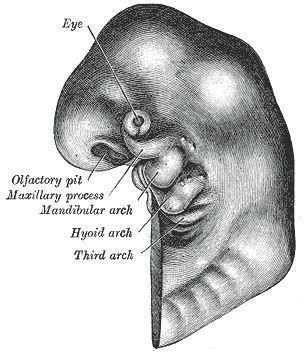Learn the Answer to the Genetics Question, What Causes Treacher Collins Syndrome?
Basics Causes of Treacher Collins Syndrome
What causes Treacher Collins syndrome in children? In the most basic sense, Treacher Collins syndrome is caused by problems associated by a gene located on chromosome 5 in human DNA. The purpose of this gene is to control the development of bones and tissue within the head. If a person possesses this gene, they fail to properly develop some of these structures while in the womb.
Upon birth, the affected facial features can be identified, allowing a proper diagnoses of Treacher Collins syndrome. Each person is born with different malformed features, but the disease most commonly impacts the ears, eyes, mouth and facial bones. Generally, the child’s intelligence is not impacted, but the problems often lead to learning disabilities since many cannot hear or speak properly.
Genetic Prevalence of the Disorder
Treacher Collins syndrome is caused by a dominant gene passed from parent to child. This means that a child has a 50 percent chance of inheriting it from either his or her father or mother. Although the majority of people with the genetic disorder can trace their gene through family history, occasionally the symptoms go undiagnosed. This can result in a child’s birth with more extreme facial features than parents with mild cases. Vice versa is possible as well.
According to research, 60 percent of all cases of Treacher Collins syndrome are not inherited. It’s widely known that new mutations can occur in human DNA, which has been shown to be very common in chromosome 5. When a child is born to parents without the dominant gene, it is highly unlikely that a second child will also be born with the disorder. However, the child with the newly-formed mutation will then have a 50 percent chance of passing it on to his or her child.
Since Treacher Collins syndrome is caused by a single gene, it is referred to as a pure genetic disease. Many times, genetic disorders are the result of a combination of different genes in the DNA. This means that the disease is relatively rare. Due to the fact that only a single gene causes this problem, the prevalence is much higher.
Embryology of Treacher Collins
What causes Treacher Collins syndrome to change the development of the embryo? The point in which the disorder takes hold of an embryo in the womb is during the sixth and seventh week of development. Treacher Collins syndrome causes the failure of neural crest cells, those responsible for craniofacial development, to migrate to the pharyngeal arches, the primordial cells that create body parts. This occurs in both the first and second pharyngeal arches, resulting in abnormalities on both sides of the head. This causes symmetrical features in the face.
The designation for the gene that causes Treacher Collins syndrome is TCOF1. It is located on the chromosome bank 5q31.3-33.3. This encodes the function of the treacle protein, which is primarily responsible for head and face development. When a mutation occurs in this gene, it causes a premature termination of the protein. Since the protein does not survive long enough, it cannot cause the features to develop properly.
References
“Treacher Collins Syndrome” NIH: https://ghr.nlm.nih.gov/condition=treachercollinssyndrome
“Mandibulofacial Dysostosis” eMedicine: https://emedicine.medscape.com/article/946143-overview
Image Source
Branchial Arch. (Supplied by Gray’s Anatomy; Public Domain; https://upload.wikimedia.org/wikipedia/commons/8/8b/Gray41.png)
This post is part of the series: The Genetics of Treacher Collins Syndrome
Treacher Collins syndrome, also known as Mandibulofacial Dysostosis, is caused by mutations in the TCOF1 gene. This gene impacts the treacle protein, which impacts the development of craniofacial features such as the ears, eyes, mouth and bone structure.
